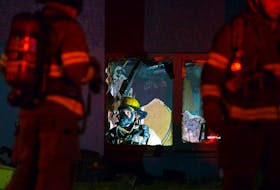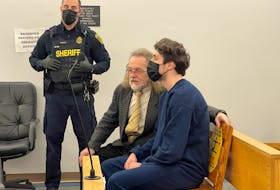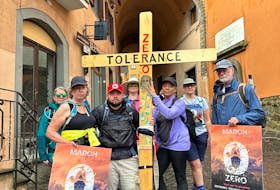“We were building the car as we were driving it.”
That’s how Katherine Malec described the career shift she and other public health nurses made last March when the COVID-19 pandemic began to sweep the world.
On March 18, 2020, Nova Scotia had three confirmed and nine presumptive COVID-19 cases.
"We fully expected we would get positive cases, and we fully expect to get more positive cases as time goes on,” said Dr. Robert Strang, chief medical officer of health at a live briefing last year.
Behind the scenes, public health was rushing to curb the spread of the virus in the province.
Malec, a public health nurse of seven years, had been working with moms and young children in the community when she was asked to join Nova Scotia’s COVID-19 response team.
“It was exciting to be part of our provincial response, but it was also uncertain because at the time we were all responding to very new work,” said Malec in an interview.
Now, Malec is still on the team that’s made up of public health nurses, mostly women, who follow up with positive COVID-19 cases from the moment they test positive, through their isolation and until they are determined recovered.
It’s the same team that identifies who a case contacted and where they’ve been, a process called contact tracing. When a case is under investigation, Malec is one of the nurses working to put the pieces of the puzzle together and find out how and where a person might have been infected.
A provincial team of detectives
Malec mainly works from her home in Halifax. Her tools: piles of scrap paper and a computer.
“I felt occasionally as a detective,” said Malec laughing.

Across the floor of her home office, it’s not out of the ordinary to find pieces of paper with information about a case that has multiple contacts. Malec often draws lines connecting one piece to the other.
“It helps to some people who are more visual learners like myself … to sometimes get a picture of the source of infection and then the cascading events that (have) resulted.”
While working from home can be a challenge, she said it has some advantages. Using platforms such as Zoom, she can work with public health nurses from different health zones across the province. It’s something she didn’t have the opportunity to do every day before the pandemic. Now, collaboration has become key to prevent the spread of COVID-19.
Learning never stops
Malec’s job before the pandemic, and that of many public health nurses, didn’t involve any contact tracing or outbreak management. So, with guidance from more knowledgeable colleagues, they had some learning to do when they started working with the COVID-19 response team.
But the job also requires experience in advocating for patients and building relationships with them. Years of being a nurse meant Malec had a lot to offer in that department. Her experience helped her make a smooth transition to her new job, where she must support patients dealing with the uncertainty that comes with COVID-19.

What that support looks like varies from case to case, said Malec. Some patients require multiple follow-ups through out their isolation to help them make sense of their symptoms or understand public health directives, for example. Others could be living with family members or roommates and need help coming up with a self-isolation plan.
Numbers don’t always reflect workload
Change is the only constant in Malec’s job, especially with scientists continuously making new discoveries about COVID-19. The response team has also evolved and restructured depending on how the disease is spreading in the province.
In November 2020, when Nova Scotia was grappling with the second wave, Dr. Strang said the province had a goal of hiring 100 contact tracers at the time.
“There’s no doubt that public health is very stretched right now, but they’re working creatively,” he said.
Malec said the team was “ready to respond.”
They used the time between the first and second wave to learn more about the virus and adapt their response to become more effecient.
But the second wave came with its own set of challenges. During the first wave the province was in lock down, but at the start of the second wave establishments such as schools, restaurants and fitness facilities were open. This means that a case would have multiple contacts the team had to follow up with.
"The days looked a lot longer," she said. "It means ... sometimes lots of leaning on your co-workers and colleagues to help support you through lab reports that are coming in very frequently and a lot more concern from the community."

She didn’t give a number when asked how many people are on the team now but said some of the nurses who were deployed at the beginning of the pandemic went back to their previous jobs. She added that the team can expand quickly as needed.
Even when case numbers were low, the work never slowed down, said Malec. Three positive cases, for example, could have handfuls of contacts or locations that the response team has to keep track of.
The ride has been long and bumpy at times, but Malec said she’s proud of the response team’s efforts to help keep Nova Scotia safe.
“i’ve been humbled to be a part of (the team and) seeing how … receptive and eager Nova Scotians have been to help support our work,” said Malec.
“That willingness and that determination has been reflected in … the success that we’ve had as a province nationally and globally.”
Nebal Snan is a local journalism initiative reporter, a position funded by the federal government.








